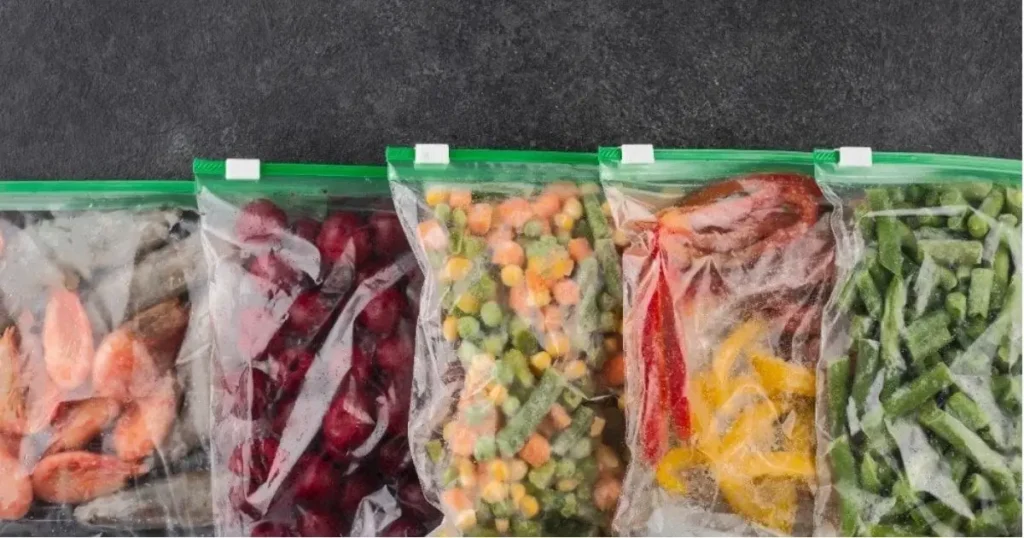How Do You Package Freeze-Dried Food?
Freeze-dried food is a fantastic option for storing meals for a long time. How you package the food makes a big difference in keeping it fresh and tasty. Packaging is the final step to preserve all the hard work that goes into freeze-drying food. If you don’t package it correctly, freeze-dried food can spoil. That defeats the purpose of preserving it.
Freeze-dried food is known for its long shelf life and versatility. However, achieving this longevity depends largely on proper storage methods. Improper packaging can lead to the infiltration of air, moisture, and even pests, all of which can ruin your stored food. In this guide, we’ll cover why packaging matters and the materials. you’ll also know the steps to package freeze-dried food, and tips to ensure your food lasts as long as possible. Let’s get started!
Why Proper Packaging Is Crucial?

Freeze-dried food lasts a long time, but only if it’s stored the right way. Here’s why good packaging is so important:
Preserve Quality: Proper packaging keeps out air, light, and moisture, which protects the flavor, texture, and nutrients. Freeze-dried foods are delicate and can quickly lose their unique qualities if exposed to the wrong conditions.
Prevents Spoilage: Oxygen and humidity can ruin freeze-dried food. But good packaging acts as a shield against these problems. Even small amounts of moisture can lead to spoilage or bacterial growth over time.
Ensures Longevity: When you package properly, freeze-dried food can last 25 years or more. The shelf life is one of the key reasons freeze-dried food is so popular among survivalists and outdoor enthusiasts. It is perfect for long-term storage.
Protects Against Pests: Sealed packaging keeps insects and rodents from contaminating your food supply. It ensures safe and edible for extended periods.
Proper packaging is not just about extending the shelf life; it’s about maintaining the integrity and safety of your food. Without the right precautions, all the time and money spent on freeze-drying food can go to waste.
Materials You Need for Packaging
To package freeze-dried food properly, gather these materials:
Mylar Bags: These are strong and lightweight. It blocks light, air, and moisture. This packaging makes them ideal for long-term storage.

Mylar bags come in various sizes, so choose the one that fits your portioning needs. Their reflective surface also provides additional protection from light exposure.
Oxygen Absorbers: These small packets remove oxygen from the bag. These stop oxidation and help the food stay fresh longer. The size of the oxygen absorber you need depends on the size of the bag and the amount of food you’re storing.
Vacuum Sealers or Heat Sealers: A heat sealer closes Mylar bags tightly, ensuring an airtight seal.

A vacuum sealer can remove extra air before sealing, providing even better protection. Both tools are essential for creating a barrier against air and moisture.
Labels and Markers: Use labels to note what’s inside and when it was packaged so you can keep track of your inventory. Proper labeling helps you organize your food storage. It also prevents you from accidentally opening the wrong package.
Storage Containers (Optional): For extra protection, you can store sealed bags in plastic bins or buckets. These containers can prevent physical damage and add an extra layer of defense against pests.
Step-by-Step Guide to Packaging Freeze-Dried Food
Follow these steps to package your freeze-dried food correctly:
1. Cool and Prepare the Food:
Make sure the food has cooled completely. This is to prevent moisture from forming inside the packaging. Warm food can release condensation, which can compromise the dryness necessary for preservation.
2. Choose the Right Packaging Material:
Pick the right size and type of bag for your needs. Mylar bags work best for long-term storage, while vacuum-sealed bags are good for short-term use. Smaller bags are ideal for single servings, while larger bags work well for bulk storage.
3. Add Oxygen Absorbers:
Place the correct size oxygen absorber into the bag. These remove leftover oxygen, keeping the food fresh. Make sure to work quickly after opening the oxygen absorbers to prevent them from losing effectiveness.
4. Seal the Package Securely:
Use a heat sealer to tightly close Mylar bags. If you’re using a vacuum sealer, make sure to remove all the air before sealing. Check for a consistent seal along the edges to ensure no air can get in.
5. Label the Package:
Write the name of the food and the packaging date on the bag. This helps you know what’s inside and when to use it. Include additional details like portion size or preparation instructions if necessary.
6. Store in a Suitable Environment:
Keep the packages in a cool, dark, and dry place to extend the shelf life. Avoid areas prone to temperature fluctuations, as these can compromise the packaging and the food inside.
Best Practices for Long-Term Storage

Here are some tips to keep your freeze-dried food in great condition:
Avoid Sunlight and Heat: Light and high temperatures can ruin the quality of the food. Always store your packages in shaded areas away from heat sources.
Store in a Dry Place: Moisture can break down the packaging and spoil the food. Basements or closets with low humidity levels are ideal for storage.
Use Protective Containers: For extra durability, place sealed Mylar bags inside plastic bins or food-grade buckets.
Check Regularly: Look for leaks or damaged seals to catch problems early. If you notice any compromised packaging, transfer the contents to a new bag immediately.
Rotate Stock: Use older packages first to ensure nothing goes to waste. Adopting a “first in, first out” system can help maintain freshness.
Common Mistakes to Avoid
To avoid ruining your freeze-dried food, watch out for these mistakes:
1. Skipping Oxygen Absorbers:
Without these, leftover air can cause the food to spoil quickly. Oxygen allows bacteria and mold to grow, even in freeze-dried food.
2. Improper Sealing:
If the bag isn’t sealed correctly, air and moisture can get in, ruining the food. Double-check seals for consistency and strength.
3. Storing in Hot Areas:
Heat speeds up food spoilage, so avoid keeping packages near heat sources like stoves, heaters, or direct sunlight.
4. Using Damaged Packaging:
Small tears or punctures in the bag can let in air and moisture. Always inspect bags for defects before and after filling.
5. Not Labeling Properly:
Without clear labels, it’s easy to lose track of what’s stored or when it was packaged. Unlabeled packages can lead to confusion and waste.
Conclusion and Final Tips
Packaging freeze-dried food the right way is the key to preserving its quality and making it last for years. With the proper materials, careful preparation, and smart storage, you can enjoy the benefits of freeze-dried food whenever you need it.

Take the time to invest in high-quality materials and follow the steps closely for the best results. Properly stored freeze-dried food is not only a convenience but also a reliable backup for emergencies.
Have questions or tips about packaging freeze-dried food? Share them in the comments below!
FAQ
The best packaging for freeze-dried food is vacuum-sealed pouches or mylar bags, as they provide an airtight seal that helps preserve the food’s shelf life by protecting it from moisture, light, and oxygen.
Proper packaging is crucial for maintaining the food’s quality and shelf life. Freeze-dried foods are highly sensitive to moisture, so airtight, moisture-proof packaging ensures that they stay fresh and retain their nutrients, taste, and texture.
It’s not recommended to reuse packaging for freeze-dried food, as it may compromise the integrity of the airtight seal and allow moisture or air to enter, which can lead to spoilage.
When packaged correctly in airtight, moisture-proof containers, freeze-dried food can last for several years, sometimes up to 25 years, depending on the type of food and storage conditions.
Yes, freeze-dried foods should have clear labeling that includes important information like the product name, ingredients, nutritional information, expiration date, and storage instructions to ensure consumer safety and proper handling.
